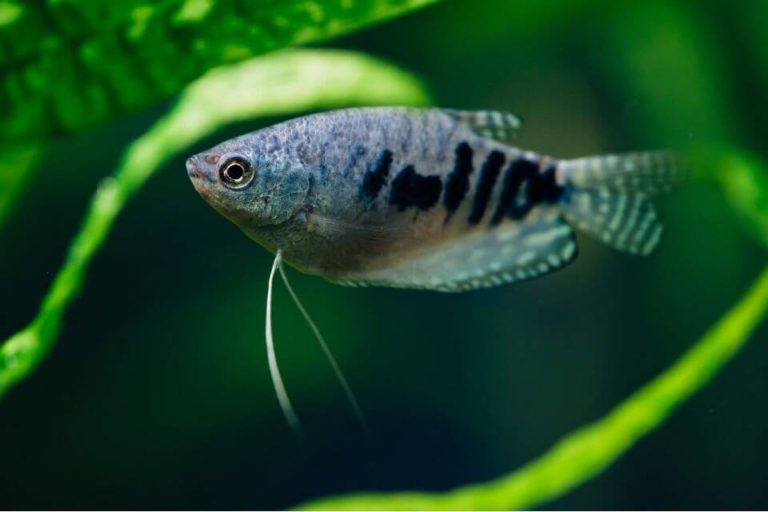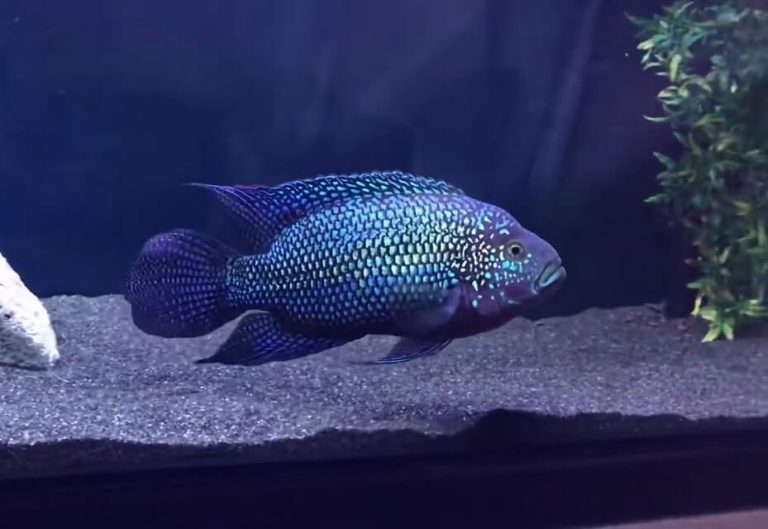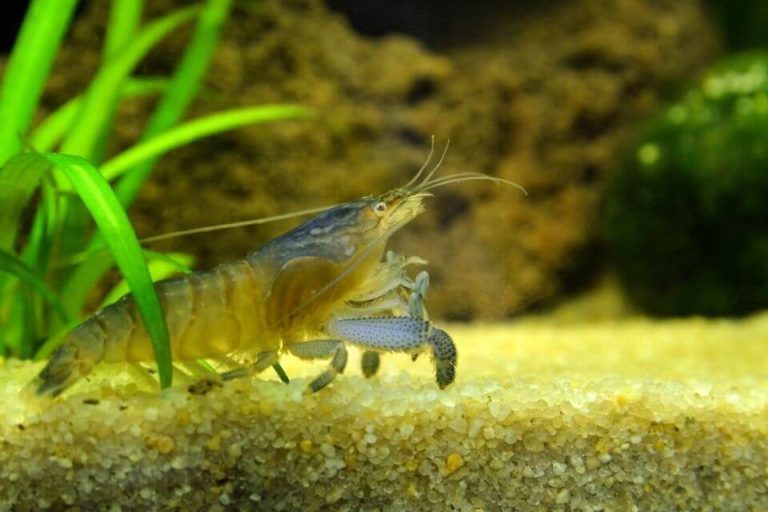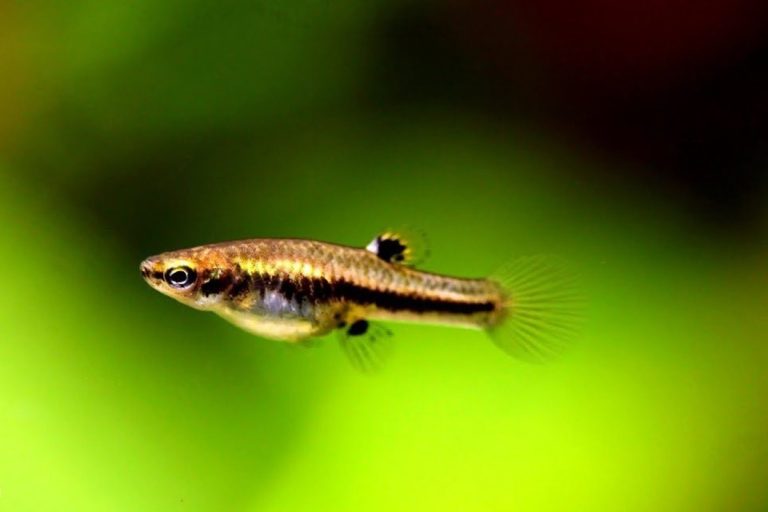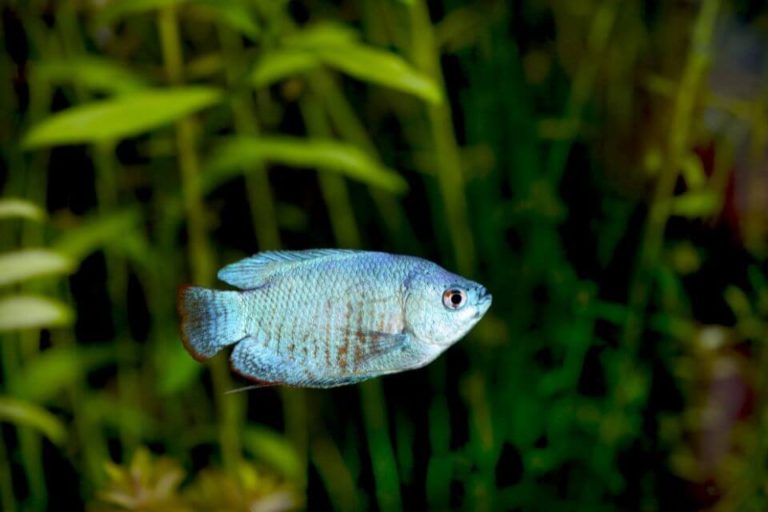African Butterfly Fish Care: Guide for Tank Setup, Feeding and Tank Mates
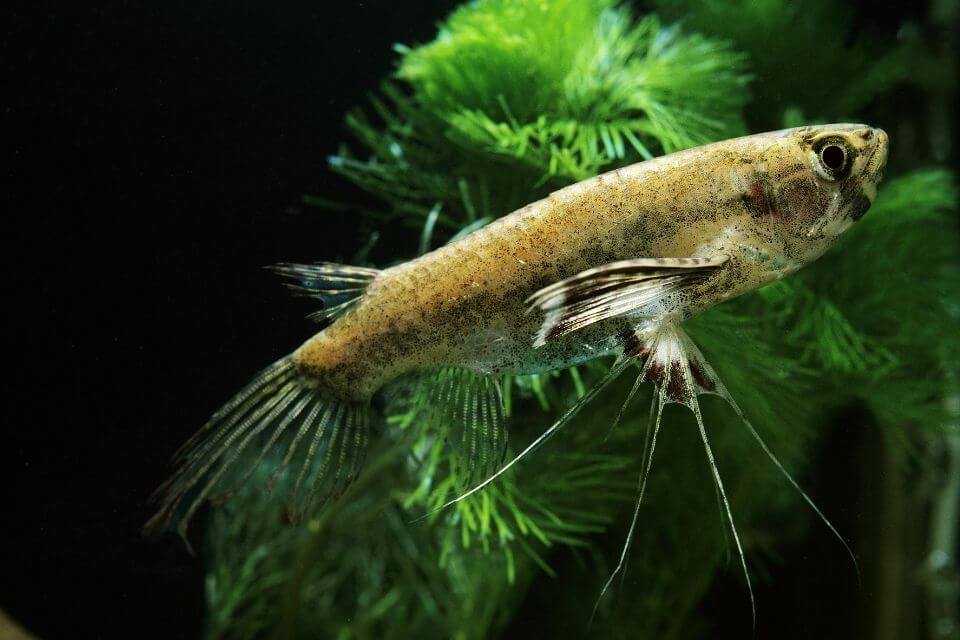
Are you a fish-keeping enthusiast? Then this article about the African Butterfly Fish Care is going to be quite exciting for you.
African Butterfly Fish is a unique creation of nature. According to many, these fish look a lot like dragons, and this is because of their different appearance.
This fish easily confuses by its name with saltwater Butterfly Fish while African Butterfly fish originated in freshwater bodies.
If you want to keep this African Butterflyfish for decorating your home aquarium, you must be an experienced aquarist. Because they need the right environment and moderate care to keep in your home aquarium.
And the next part of this article will provide detailed guidelines and essential information in this regard. So, let’s start straight away without delay.
| Quick Facts: | |
|---|---|
| Common Names | : African Butterfly Fish, African Butterflyfish, Freshwater Butterflyfish |
| Scientific Name | : Pantodon buchholzi |
| Family | : Pantodontidae |
| Origin | : Tropical bodies of water in West Africa |
| Care Level | : Moderate |
| Lifespan | : 5 to 6 years |
| Size (average) | : Up to 5 inches |
| Diet | : Carnivorous |
| Breeding | : Egglayer |
| Social | : Not a social fish |
| Temperament | : Semi-aggressive |
| Minimum Tank Size | : 40 gallons |
| Temperature | : 75 – 86 °F (24 – 30 °C) |
| Water Hardness | : 8 - 12 dGH |
| Water pH Level | : 6.5 - 7.0 |
Overview of African Butterfly Fish
Professor R. W. Buchholz first discovered this extraordinary African Butterfly fish. And later, this different-looking fish was scientifically named Pantodon buchholz, which is similar to his name. However, in the year 1876, a person named Peters described this fish species in full detail.
The main reason for naming this fish Butterfly Fish is that they look a lot like butterflies when they are seen from the water. And their enormous disguised wings are responsible for their appearance.
These African fish are usually not much larger than 5 inches in size when keeping in an aquarium. Then there is a definite probability that they can grow a range of about 4 inches (10 cm).
Extraordinarily beautiful, this fish has a light brown body with a slight greenish tinge and deep markings on its broad fins.
These stagnant freshwater African Butterfly fish have large camouflage wings according to their entire body structure and are using these fish to jump short distances from the water. Their faces are wide enough to look a lot like lizards, with their face slightly upturned in front of their bodies.
Because of their physical structure, they have many advantages for eating all kinds of living insects floating on the water’s surface. They have the unique ability to carry out respiratory activities from the top of the water to the surface air, which is why they have remained unchanged since ancient times.
They become dull when the sun’s heat is exposing during the day, and when the light diminishes, they become active again and stay at the top of the water in search of food.
It is found mainly in various water bodies in West Africa. And they live their lives on the very surface of ponds or reservoirs where there is no current.
Origin, Distribution, and Availability
These African Butterflyfish are originally found in tropical freshwater bodies in West Africa, such as Nigeria, Cameroons, Zaire. And these Freshwater Butterflyfish live in various acidic water-rich lakes in West Africa, including their breeding process completed there.
It was first introduced to the people of Europe and other parts of the world in 1905. Plus, this aesthetically odd fish has been on the list of aquarists interested ever since.
The most notable and exciting thing about this Butterfly Fish is that it has survived on this earth for the last 100 million years and has kept itself completely unchanged. And its credible authenticity has been realized by archaeologists when its ancient living fossils have been found.
Whether you are interested in collecting this freshwater Butterfly fish or African Butterfly fish for having a pet purpose you may have to pay a little more than other common freshwater fish species.
This fish species is not a common breed available in your local pet stores. You might need to make a request from a breeding facility to get one for you. Most of the time finding African Butterflyfish from reputed online stores might be the easy way to purchase them.
African Butterfly Fish Typical Behavior
When you want to keep these Butterflyfish in your freshwater aquarium it is easy to do so because they are peaceful and quiet species. Also, spend most of their active time in the upper part of the aquarium. And there is a prolonged movement. But whenever an edible insect comes over the water, its behavior changes.
Since they can swim fast, they can use this facility to swallow food instantly, and they can easily consume anything alive that will take up space in their mouths.
So, if you keep small species with them in the same aquariums, the chances for small fish species to survive are minimal, because they like to hunt small living things as their prey.
They can easily make big jumps with their specially designed, powerful fins. Your aquarium must have a weighted lid so that these Butterfly fish cannot practice high jump!
These fish usually do not like to be exposed to too much light, so they are fully active when the sunsets. So, if you have too much lighting around your aquarium, you need to reduce it; otherwise, they will not be comfortable.
Characteristics of African Butterfly Fish
Many want to preserve the fish in an aquarium that looks like this beautiful Butterfly of the African continent. So, in this part of the article, every effort will be made to highlight all the information about the characteristic of this fish. So, stay tuned.

Appearance, Colors, and Special Markings
The unique appearance of these fish species that looks like this butterfly is entirely different from all freshwater fish species. And its’ highly artistic designs that have not changed for several million years. Yet, this fish’s physical constitution has been modified perfectly to the present world’s natural conditions, which is unbelievable.
Everything about this fish is ready to hunt and develop skills at their bottom. They have two eyes at the very front of their body facing upwards, so they can easily perceive everything from the front.
Most of their whole body is flattened from the top. And their mouths also move forward so that they can take any small living food without the hassle. And since this fish stays at the very top of the water most of the time, it is also convenient to continue breathing activities easily.
The beautiful fins on the tergal surface of this butterfly fish and at the place of excretion are almost identical in size. But the fins at the end of their body are slightly larger than the others.
All the wings spread out on either side of this fish, for evenly spaced, have dark lines on each of them separately, and the branches are partially transparent.
Almost all types of African Butterfly fish are usually in color shades of brown or gray. They have a minimal number of tiny dots on different parts of their body for increasing their attractiveness with radiance.
African Butterflyfish species may change their body color and shades according to tank environment and conditions.
African Butterfly Fish Size
There are many of us, who have only seen this remarkable species of fish on the internet. So, in their case, the actual size would be somewhat surprising. And the maximum length of this Butterflyfish is about 5 inches.
However, some breeders have been able to increase its size a little. However, it needs an extreme level of care.
Lifespan: How Long Do African Butterfly Fish Live?
The average lifespan of African Butterfly fish is about 5 to 6 years on average. However, you need to maintain an outstanding quality diet schedule and tank conditions.
And provide it in as many situations as possible in line with reality; However, if you have a breed with perfect genetics and take proper care of them according to experts’ advice then it will be probable to go beyond this lifetime.
Aquarium Care and Conditions for African Butterfly Fish
The most important thing to take care of these very impressive African Butterflyfish species is to create the right habitat.
So, if you are thinking of preserving a fish of this species to enhance the aquarium’s beauty in your home. And then, the following things will help you at a significant rate.
Tank Conditions and Care
This butterfly-shaped fish is usually no more than 4 to 5 inches long until it is a full-grown adult. This fish will be in the upper part of the water in the tank most of the time.
A minimum of 40 gallons of acidic soft water tank must be the right choice for their aquarium. Divided tanks are not as effective for these fish, so they require a large surface tank as possible.
African Butterflyfish Tank Size
Since these Butterflyfish do not use the bottom of the tank very much you might not need deep water tanks for them to thrive. The designated tank size should be at least 12 inches in width and 35 inches in length (30 cm x 90 cm) that can hold at least 40 gallons of water.
Because this fish does not like to be in deep water bodies, it is sufficient to have a maximum depth of 7 to 8 inches of your selected tank.
Tank Setup
This African Butterfly fish is like nocturnal animals, so they are almost inactive in extra light or during the day. So, if there is much light around your aquarium, arrange some shade there.
Living plants are essential for maintaining the proper ecosystem for this fish species in your aquarium. For this, you can use plants like Bolbitis, Anubias and the fish will use the leaves of these aquarium plants most of the time to hide.
Also, live plants will make a perfect environment for fish with beautiful decoration.
You must change the water in the aquarium after a certain period and use the perfect filtration system should be installed to ensure water quality is stable at all times including oxygen levels of the water.
However, before choosing a filtration pump, you need to ensure that the aquarium’s water does not cause too much current. And because these butterflyfish feel more comfortable in still water.
And if you want to use various stones or wood to make your aquarium tank very attractive. Then you can use it without hesitation because since they will be at the bottom, this African Butterflyfish will not have any problem.
Water Conditions and Parameters
These Butterflyfish can survive well in slightly acidic soft water. These fish have a remarkable ability to withstand heat. So, you need to keep the aquarium water temperature at 75 to 86 degrees of Fahrenheit (24 to 30 °C).
The pH (‘potential of hydrogen) range of water supplied to the tank should be in the range of 6.5 to 7.0, and the hardness should be in the range of 8 to 12 dGH (Degree of General Hardness).
- Temperature: 75 – 86 °F (24 – 30 °C)
- Water pH: 6.5 – 7.0
- Hardness: 8 – 12 dGH

Suitable Diet and Feeding
It is essential to provide the right food at the right time for every pet. So, in the same way in this Butterflyfish care, you need to feed them with a nutritious diet at the right time as required.
What Do You Feed African Butterfly Fish?
The perfect food for this African Butterfly fish, utterly ideal as a predator, can easily be obtained from the natural environment around them. Because in the wild or the aquarium, these fish spend most of their time patrolling the surface of the water for small insects and looking for small fish.
So, if you want to see them come out with a perfectly healthy sound, you must let the live insects feed them.
However, according to almost all these African Butterflyfish owners, their favorite food is live crickets, which will move on the water. But if the food you provide goes to the bottom of the aquarium, they will miss it.
However, this fish food list also includes small fish, spiders, mosquito larvae, worms, roaches, earthworms, mealworms, blood worms, and many other small living carnivorous insects.
How Often Do We Have to Feed African Butterfly Fish?
You can feed this African Butterflyfish at least 2 times a day and up to 4 times a day if you want to meet the food needs fully.
This feeding method is very effective because, according to high-level experts, it is necessary to follow this rule. Because it provides them with extra energizers and mimics the way they eat naturally.
African Butterfly Fish Diseases
Like other common fish, this butterflyfish can cause common diseases such as skin flukes, various raccoon infections, and more. One of the best aspects of this species is that it does not have any specific complex disease or is not affected.
It would be great if you were exceptionally cautious to ensure that the aquarium’s water quality. And parameters are in perfect order to keep these hobby fish free from various diseases.
And these particular fish are susceptible to their habitat because it is a common habit for them to stay on top of the water, and there is a good chance that they will get sick when they are disturbed.
In the case of aquarium fish keeping, it has been observing that all the fish become infected before any of the early warning signs are noticing, which is a prevalent issue.
However, according to expert fish keepers, sublime is the best way to prevent fish disease. It’s time to give your favorite fish the right environment to meet their needs and provide them with nutritious food that suits their needs.
African Butterfly Fish Gender Differences
Among these African Butterflyfish, males tend to be slightly thinner than females. But this idea can only be used when the female fish is carrying eggs because having eggs in her stomach will usually feel a bit fat.
Otherwise, it is a little hard to determine the gender of these fish species.
In this case, one more method can be applied to differentiate males and females of this species. The anal fins of the male have shown little bent, the posterior end of the anus fins of the female fish is straight.
How Do African Butterfly Fish Breed?
Another interesting thing about African Butterflyfish is that you can quickly breed them entirely in your home aquarium if you want.
However, you have to control it, and it’s slightly challenging to do. You must always maintain the normal condition of the water in the tank. And their habitat needs to be set up correctly so that they do not feel any stress.
To properly breed these fish, you must ensure that some floating plants are provided consistently in the right size aquarium.
That will be considered part of the typical habitat for them in the early stages, but this setup will play a significant role in the reproductive process. And with that, you have to take special care to maintain and control the temperature of the water in the tank.
When these fish start laying eggs, they lay 3 to 7 eggs at a time and can lay about 80 to 200 eggs a day. The eggs will float in the aquarium after a while then you have to collect them and transfer them to another aquarium; otherwise, their parents will eat the eggs.
If everything goes well the chicks will hatch in 3 to 7 days, and you will need to take proper care of them.
Tank Mates for African Butterfly Fish
With these unique fish, you can keep another species in your fishbowl if you want. You have to choose the fish that are located at the very bottom of the tank or in the middle.
Because butterflyfish stay in the upper part most of the time, they do not tolerate other fish there.
According to my experience, I recommend below freshwater fish species that do well with African Butterflyfish:
- Pictus Catfish
- Congo Tetra
- Peacock Cichlid
- Firemouth Cichlid
- Kuhli Loach
Can African Butterfly Fish Live Together?
Yes of course you can keep more than one African Butterflyfish in an aquarium. You need to make sure your aquarium is big enough in length so that there is no shortage of space.
Plan to set up a larger aquarium for them to live in harmony without getting stressed. A shallow aquarium that holds more than 50 gallons of water would be ideal if you plan to keep more than one.
Are African Butterfly Fish Hardy?
These African butterflies are hardy fish and are relatively easy to care for. For these particular fish to survive appropriately, you need to control the aquarium’s temperature steady, which is ranges from 75 to 86 °F (24 to 30 °C). And you have to set the pH level of the water in which you put them in the aquarium.
These beautiful fish species are commonly found in various stagnant water bodies in Africa. Because of this, the filtration system for keeping them in your aquarium does not create too many waves in the water.
Are African Butterfly Fish Aggressive?
Butterflyfish are generally tranquil fish; most of the time, they are located in the upper part of the water of a pond or aquarium and without much movement.
However, since they are carnivorous fish, when a small fish comes in front, it aggressively attacks and takes it as food.
On the other hand, these fish can do well for stay together with Elephant Nose fish, Congo Tetras, various Catfish species, Knife fish species, and other non-aggressive fish species that are not too big.
Will African Butterfly Fish Eat Guppies?
Guppies (a small fish) for African Butterfly Fish are a portion of delicious edible food. According to many experienced fish keepers, if you want to see this African fish grow fast and complete. Then you can include guppies in their balanced diet chart without any doubt.
Do Butterfly Fish Eat Shrimp?
These Butterflyfish love to eat live insects, so they can quickly eat small live shrimp species. Even if you can hatch the chicks from the eggs provided by them in your aquarium, you can give the chicks live small brine shrimp as feed after a while.
Final Thoughts of Keeping an African Butterfly Fish
Proper caring of these African Butterfly Fish requires much experience in fishkeeping. Because they also need special care requirements these fish are not beginner-friendly.
That is not the kind of fish you buy and keep in a freshwater tank. You have to have experience in fish keeping to accommodate these fish species in your tank. But you feel confident if you carefully follow the African Butterflyfish Care Guide described in detail in this article even you are a novice fishkeeper.
Taking proper care of these fish, which look a lot like butterflies, is also an excellent reward for aquarium lovers. Because seeing these unique fish’s movement in the aquarium also creates a feeling of joy in the mind.
These fish species, full of extraordinary craftsmanship, are perfectly capable of enhancing the beauty of any home aquarium.


